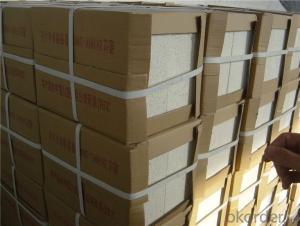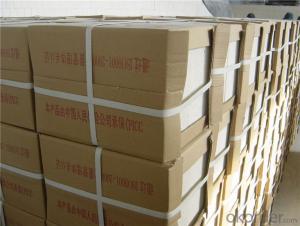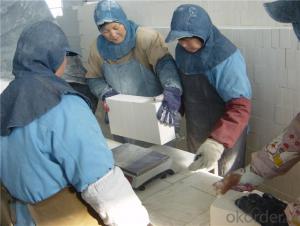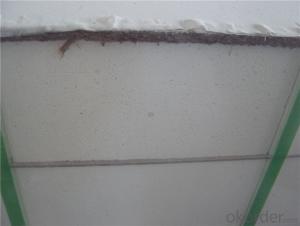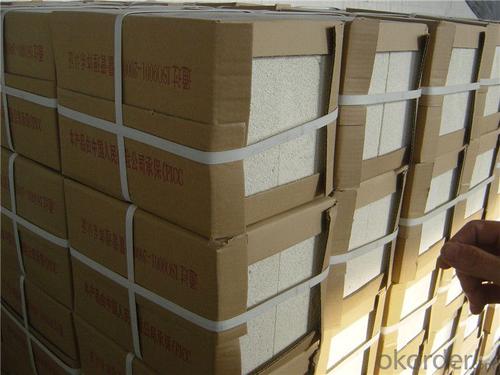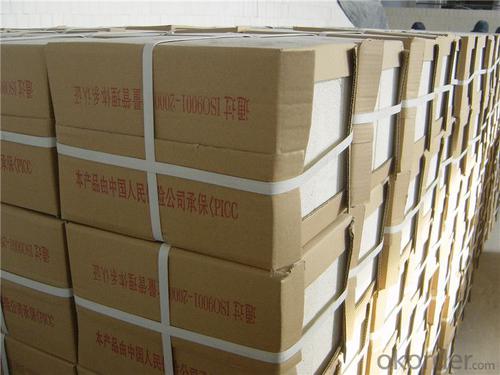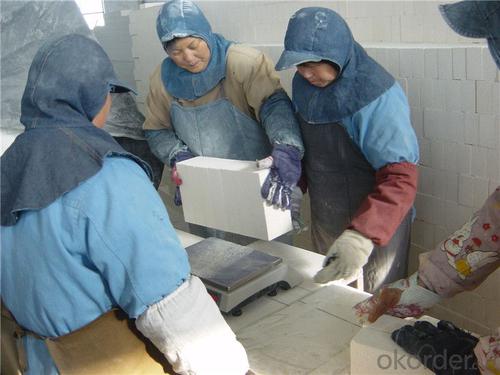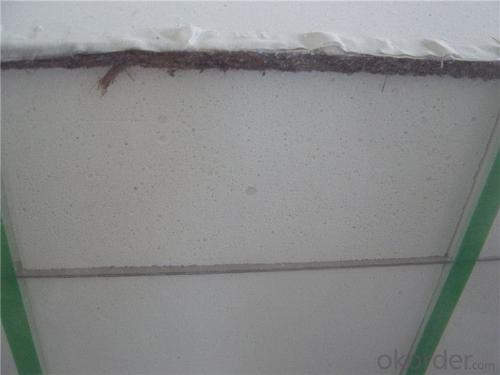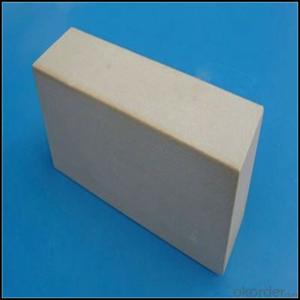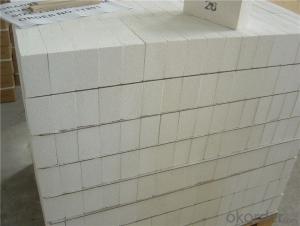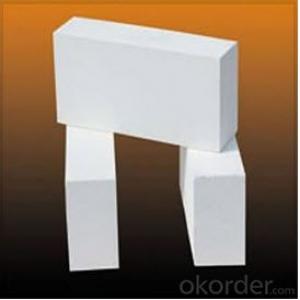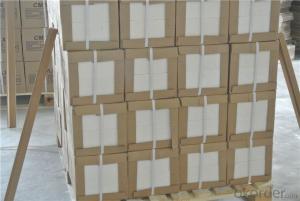Insulating Fire Bricks for Glass Tanks - Custom Shaped Fire Clay Bricks Refractory
- Loading Port:
- Shanghai
- Payment Terms:
- TT OR LC
- Min Order Qty:
- 1 m.t.
- Supply Capability:
- 1000 m.t./month
OKorder Service Pledge
OKorder Financial Service
You Might Also Like
Thermal Insulation Fire Clay Brick
Refractory brick is a block of refractory ceramic material used in lining furnaces, kilns, fireboxes, and fireplaces.
We provide high quality Refractory Fire Bricks that are used on wide range in the various industries like Cement, Glass and Steel. Refractory Fire Bricks are provided as per the quantity and specifications required by the customers. We provide an extensive range of Refractory Fire Bricks at reasonable prices that depend upon the quantity ordered.
Application
Insulating Fire Brick are used for the lining of converter, alternating current arc furnace, direct Current arc furnace and the ladle slag line, etc.
Company Advantage
(1)Long Insulating Fire Brick manufacture history: 25 years manufacturer
(2)Advanced equipment
(3)Diversification of production standards: ISO ANSI FEPA JIS ASTM
(4)Flexible payment: T/T L/C D/P D/A
(5)Professional marketing team and after-sale service
Insulating Fire Brick main feature:
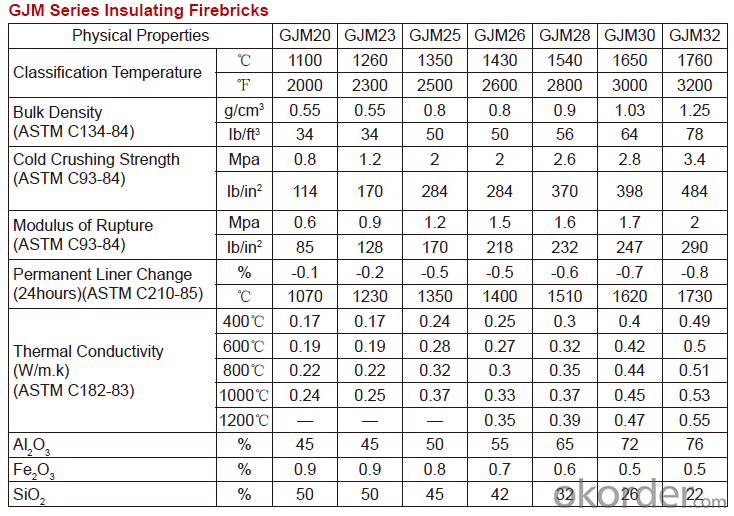
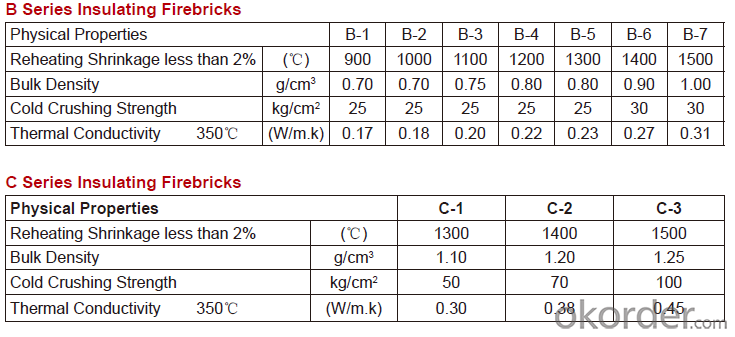
Equipment
1 unit of Ceramic Abrasive (SG Abrasive) pilot production line
2 units of Compact grain Abrasive pilot production lines
1 unit of high-end coated abrasives (abrasive cloth) production line
2 units of Boron Carbide production lines
3 large flexible crushing and sieving lines for grit production lines
6 units of 5000KVA-10000KVA dumping type electric arc furnaces for Brown Fused Alumina fusion
Q1 What’s the transport method?
A1 FCL delivery goods with wooden pallet or wooden case by sea; If LCL delivery, must with wooden case; Sometimes need open top, flat rack or bulk cargo.
Q2 What’s the required payment term?
A2 Generally 30% TT as the prepayment, 70% TT before delivery. If need, 100% Irrevocable Letter of Credit or negotiation.
Q3 Which country are our products exported to?
A3 Apart from entire Chinese market, the US, Russia, Japan, Korea, Australia and some Southeast Asian Nations.
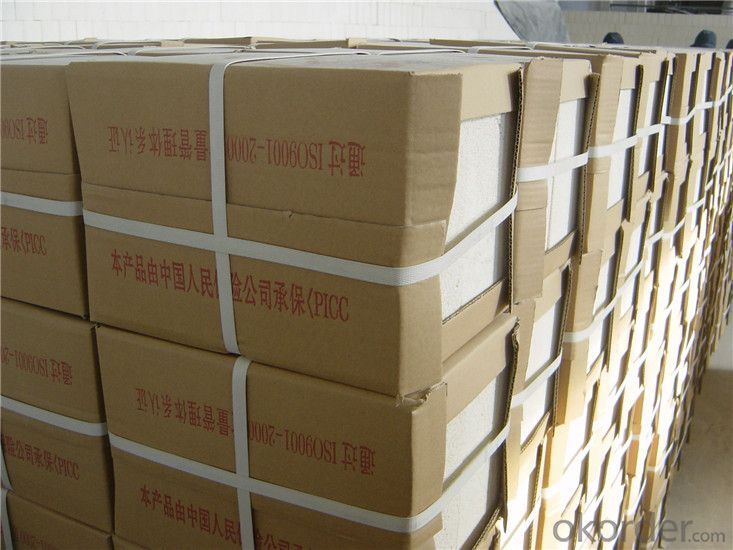

- Q: Can insulating fire bricks be used in the construction of brick ovens?
- Yes, insulating fire bricks can be used in the construction of brick ovens. These bricks have high-temperature resistance and excellent insulation properties, making them suitable for retaining heat and preventing heat loss in a brick oven.
- Q: Can insulating fire bricks be used in the construction of crucible furnaces?
- Yes, insulating fire bricks can be used in the construction of crucible furnaces. Insulating fire bricks are designed to withstand high temperatures and provide excellent insulation properties, making them suitable for use in crucible furnaces. These bricks are made from lightweight materials such as alumina and silica, which have low thermal conductivity and can effectively retain heat. By using insulating fire bricks, the crucible furnace can achieve higher energy efficiency, faster heating times, and better temperature control. Additionally, these bricks are also resistant to thermal shock, ensuring they can withstand the intense heat generated in the crucible furnace. Overall, insulating fire bricks are a popular choice for constructing crucible furnaces due to their excellent thermal insulation properties and ability to withstand high temperatures.
- Q: How do insulating fire bricks help to conserve energy?
- Insulating fire bricks help to conserve energy in several ways. Firstly, these bricks are made from materials that have high thermal resistance, which means they are excellent at preventing the transfer of heat. By using insulating fire bricks in the construction of furnaces, kilns, or any other heat-generating equipment, they act as a barrier that prevents the loss of heat to the surroundings. This, in turn, reduces the amount of energy required to maintain a consistent temperature within the equipment. Additionally, insulating fire bricks have low thermal conductivity, meaning they do not conduct heat easily. As a result, they prevent the transfer of heat from the hot side to the cold side, minimizing heat loss and ensuring that more energy is utilized for the intended purpose rather than being wasted. Furthermore, insulating fire bricks have high heat capacity, allowing them to absorb and store heat efficiently. This property is beneficial as it helps to stabilize temperature fluctuations by releasing stored heat slowly over time, reducing the need for constant energy input to maintain the desired temperature. In summary, insulating fire bricks help to conserve energy by reducing heat loss, minimizing heat transfer, and stabilizing temperature fluctuations. By implementing these bricks in various heat-generating applications, energy consumption can be significantly reduced, leading to cost savings and a more sustainable use of resources.
- Q: Can insulating fire bricks be used in outdoor fire pits?
- Certainly, outdoor fire pits can make use of insulating fire bricks. These bricks are specifically engineered to endure high temperatures, rendering them suitable for fire pit applications. They are crafted from heat-resistant materials like ceramic fibers or refractory substances, which aid in preserving the heat within the fire pit. Moreover, insulating fire bricks possess a lightweight composition and are effortless to install, making them a practical selection for outdoor fire pits. Nevertheless, it is crucial to bear in mind that these bricks may not possess the same level of durability as regular fire bricks. Thus, they might necessitate more frequent replacement if exposed to extreme temperatures or harsh weather conditions.
- Q: Can insulating fire bricks be used in the construction of furnaces?
- Insulating fire bricks are indeed suitable for the construction of furnaces. These bricks possess exceptional insulation qualities, enabling them to endure high temperatures without significant heat loss. Their composition primarily consists of lightweight materials like clay, silica, and alumina. Consequently, they exhibit low thermal conductivity, allowing the furnace to retain heat efficiently while preventing excessive heating of its outer surface. As a result, these bricks are ideal for lining the walls, roof, and floor of furnaces, contributing to enhanced energy efficiency and reduced fuel consumption. Moreover, their resistance to thermal shock ensures their durability and longevity in the demanding conditions of a furnace. In conclusion, considering their exceptional insulation properties and capacity to withstand high temperatures, insulating fire bricks remain a preferred option for furnace construction.
- Q: Are insulating fire bricks resistant to erosion?
- Yes, insulating fire bricks are generally resistant to erosion. Insulating fire bricks are made of lightweight materials such as alumina, silica, or a combination of both. These materials have excellent resistance to erosion caused by high temperatures, chemical reactions, and physical wear. They are designed to withstand extreme heat and harsh conditions, making them highly durable against erosion. Additionally, insulating fire bricks have low thermal conductivity, which means that they do not absorb or transfer heat easily, further protecting them from erosion. However, it is important to note that the resistance to erosion may vary depending on the specific composition and quality of the insulating fire bricks.
- Q: Can insulating fire bricks be used for insulation in furnaces?
- Yes, insulating fire bricks can be used for insulation in furnaces. These bricks are designed to withstand high temperatures and provide excellent thermal insulation, making them suitable for use in furnaces to reduce heat loss and increase energy efficiency.
- Q: Are insulating fire bricks resistant to freeze-thaw cycles?
- Generally, insulating fire bricks are resistant to freeze-thaw cycles. They are designed with low thermal conductivity and high resistance to thermal shock, making them durable and able to withstand extreme temperature variations, including freeze-thaw cycles. This resistance to freeze-thaw cycles is crucial in applications where the bricks are exposed to fluctuating temperatures, like in furnaces, kilns, and other high-temperature environments. Moreover, the insulating properties of these bricks minimize heat loss and prevent moisture penetration, further improving their resistance to freeze-thaw cycles. However, it is important to note that the composition and manufacturing process of the insulating fire bricks may vary, so it is recommended to consult the manufacturer's specifications and guidelines to ensure their suitability for the intended application.
- Q: Are insulating fire bricks resistant to water absorption?
- Yes, insulating fire bricks are highly resistant to water absorption.
- Q: Can insulating fire bricks be used in glass furnaces?
- Glass furnaces can indeed utilize insulating fire bricks. These bricks are specifically engineered with low thermal conductivity, rendering them ideal for high-temperature environments such as glass furnaces. The implementation of these bricks aids in the reduction of heat loss from the furnace, consequently enhancing energy efficiency and decreasing operational expenses. Moreover, they offer superior insulation and aid in maintaining consistent temperatures within the furnace, a vital factor in glass production. Furthermore, insulating fire bricks exhibit excellent resistance to thermal shock and can endure the extreme temperatures and rapid temperature fluctuations that are common in glass furnaces. Overall, integrating insulating fire bricks into glass furnaces can result in enhanced furnace performance, heightened productivity, and energy conservation.
Send your message to us
Insulating Fire Bricks for Glass Tanks - Custom Shaped Fire Clay Bricks Refractory
- Loading Port:
- Shanghai
- Payment Terms:
- TT OR LC
- Min Order Qty:
- 1 m.t.
- Supply Capability:
- 1000 m.t./month
OKorder Service Pledge
OKorder Financial Service
Similar products
Hot products
Hot Searches
Related keywords
